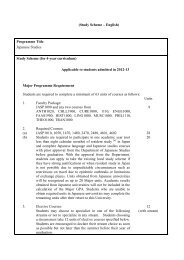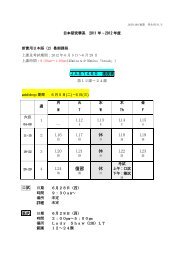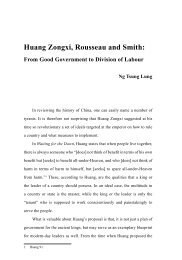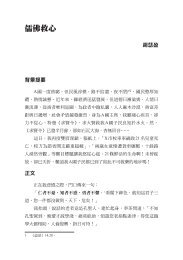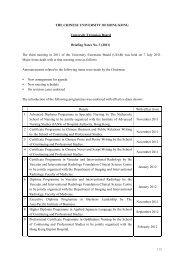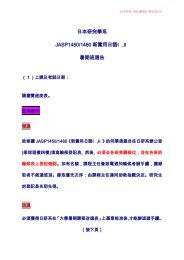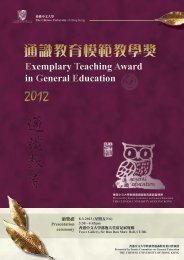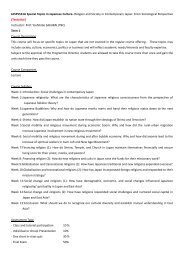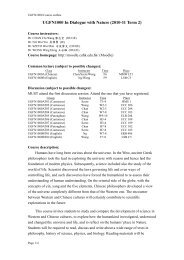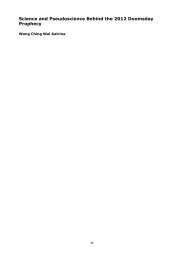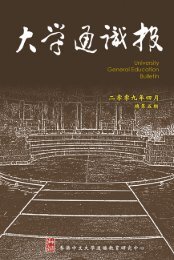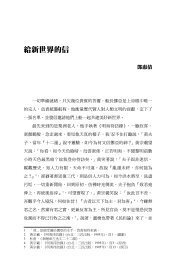ä¸è¼å ¨æ¸ - The Chinese University of Hong Kong
ä¸è¼å ¨æ¸ - The Chinese University of Hong Kong
ä¸è¼å ¨æ¸ - The Chinese University of Hong Kong
Create successful ePaper yourself
Turn your PDF publications into a flip-book with our unique Google optimized e-Paper software.
Susan Gano-Phillips, Affective Learning in General Education 11<br />
learning outcome has been achieved. ATs can be quite varied as well. <strong>The</strong>y<br />
may include, but are not limited to, multiple choice examinations, essay<br />
examinations, journals, papers, assignments, participation, or even behavioral<br />
performances (e.g., giving a persuasive speech). <strong>The</strong> alignment <strong>of</strong> these three<br />
components <strong>of</strong> teaching and learning allow students to make the most <strong>of</strong><br />
their university experiences and to demonstrate high achievement. Thus, it<br />
is in light <strong>of</strong> an OBA approach to teaching and learning that considerations<br />
<strong>of</strong> affective learning must be framed. We must consider what constitute<br />
appropriate affective intended learning outcomes, what teaching and learning<br />
methods allow students to achieve those affective ILOs, as well as how to<br />
assess students’ achievement <strong>of</strong> affective learning outcomes.<br />
<strong>The</strong> second major educational reform in <strong>Hong</strong> <strong>Kong</strong> that has implications<br />
for affective learning is the 3 + 3 + 4 reform. This far-reaching reform <strong>of</strong> the<br />
K-16 system is designed to <strong>of</strong>fer opportunities to more students to pursue<br />
additional education and to better prepare students to work in our globally<br />
interconnected, knowledge-based economy. Practically speaking, this reform<br />
involves moving from a three-year baccalaureate degree following seven<br />
years <strong>of</strong> secondary education (3–4–3), to a four-year baccalaureate degree<br />
following six years <strong>of</strong> secondary education (3–3–4). <strong>The</strong> <strong>University</strong> Grants<br />
Committee has specified that, “[t]he four-year undergraduate programme<br />
should be coherent, and the additional year should not be a simple add-on<br />
to the current three-year undergraduate programme”(Legislative Council<br />
<strong>of</strong> <strong>Hong</strong> <strong>Kong</strong>, 2005). Thus, this reform calls for a complete overhaul <strong>of</strong><br />
undergraduate education. With credits available through this additional year<br />
<strong>of</strong> university study, students will be exposed to “general education,” under<br />
the belief that a broad knowledge base will provide a foundation for life-long



